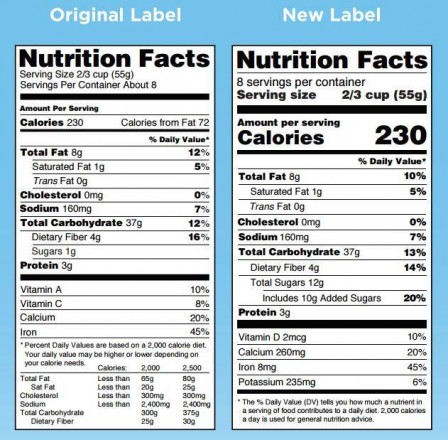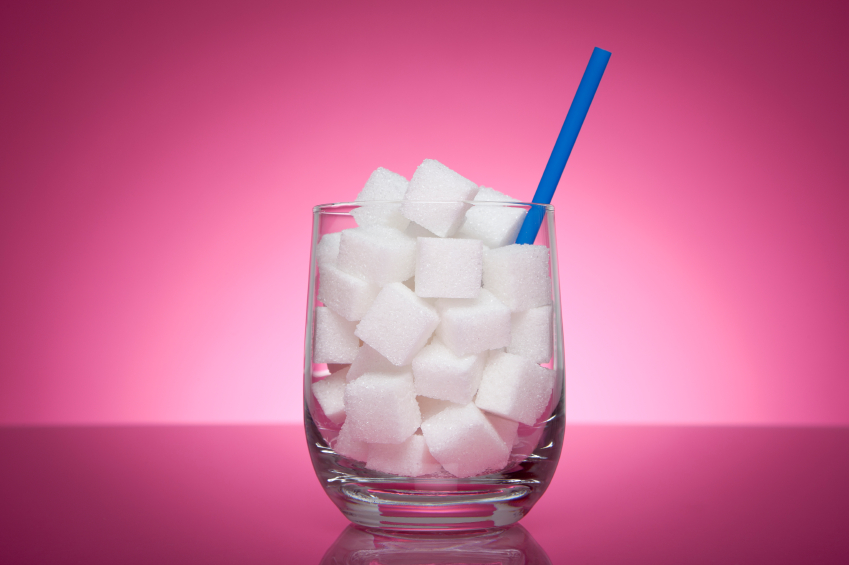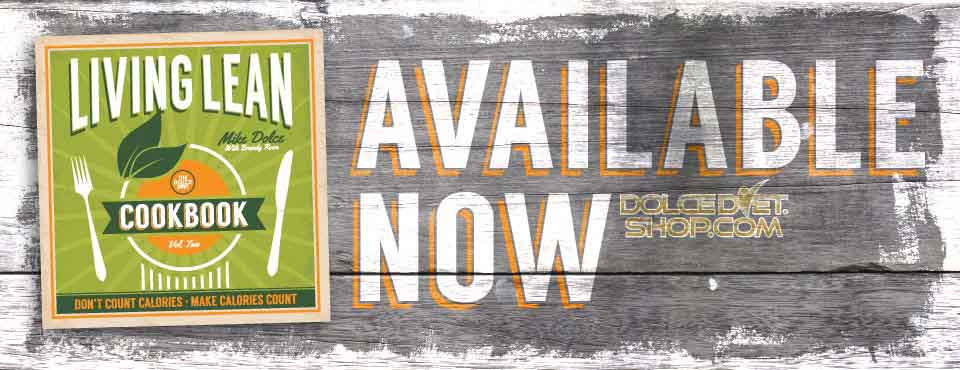4 Ways to Limit Added Sugar
by Mary Spiegelberg and Nicole Kiley, MSc, RD
This year the FDA announced there will be a new Nutrition Facts Label for packaged foods. The new label will reflect public health needs, including the link between diet and chronic diseases. One major update to the Nutrition Facts Label is it now will include the amount of added sugar (in grams).

What is an added sugar? Added sugars are sugars and syrups that are added to foods or beverages when they are processed or prepared. This does not include naturally occurring sugars such as those in milk and fruits. One good example of this is yogurt. Yogurt naturally contains carbohydrate (sugar), and that’s a good thing. With new labeling laws, consumers will be able to differentiate between what’s naturally occurring and what’s added.
The American Heart Association currently recommends a maximum added sugar intake of 37.5 grams (9 teaspoons) a day for males and 25 grams (6 teaspoons) for females. What does that look like?
Food for thought:
• A 12 oz. soda contains 39 grams of added sugar.
• A 20 oz. sports drink contains 21 grams of added sugar.
• ½ cup applesauce (sweetened) contains 18 grams of sugar, whereas ½ cup unsweetened contains 11 grams (naturally occurring) sugar. That means there are 7 grams of added sugar in the sweetened applesauce.
So how can you limit added sugars?
1. How do you take your morning coffee? Did you know a medium non-fat vanilla latte contains 35 grams of added sugar? If you hold the vanilla, your coffee’s sugar content instantly drops to 19 grams. Start slow, maybe ask for half the pumps of your favorite flavoring as you begin your sugar descent. After you’ve adjusted, cut back to a single pump and eventually you will retrain your taste buds all together!
2. Check the Ingredients! Did you know the ingredients in food products are listed from what is most represented in the food item to least? So if you are buying whole wheat bread and the first ingredient isn’t whole wheat, that may be your first red flag. If sugar is within the first few ingredients, ditch it.
3. Recognize. Manufacturers have become very creative in how they label/name sugar. There are currently over 61 different names for sugar! Consumer confusion much? Some examples are sucrose, high-fructose corn syrup, dextrose, rice syrup, maltose, cane juice, caramel, agave, dextrin, glucose and fruit juice. Unsure what an ingredient is? Google it. Over time you will become more familiar with ingredients and find the brands that best meet your needs.
4. Choose Solid Food First. In addition to containing added sugar, most fruit juices are stripped of the nutritional benefits found in the actual fruit – fiber, phytochemicals (disease protection), vitamins and minerals. In fact, most companies add vitamins back into juice to help it appear nutritionally comparable. Next time you have a craving for something sweet, reach for a fresh piece of fruit. While there is a time and a place for fresh squeezed orange juice (Sunday breakfast anyone?), in general you get way more bang for your buck with an actual orange.






